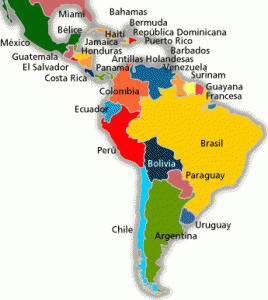The use of voting automation technologies to strengthen electoral processes keeps generating success stories. Electoral commissions have worked in fairs and events related to e-voting, biometric registries, and the use of software and hardware to make automated voting accessible.
There are several examples which we are happy to mention:

Panama. In Panama City, on November 19th to 21st, a tech fair took place for services related to identification and civil registration. It had the purpose of familiarizing the different government bodies with new technologies and solutions. The Panamanian Electoral Tribunal used e-voting for the elections at the country’s International Maritime University, whose dean was elected on October 16th. Additionally, voting automation has occurred in elections of collegiate bodies and political parties.
Peru.The Electoral Technology and Literature Fair took place in Lima on November 24th and 25th, in the frame of the 9th Inter-American Electoral Authorities Meeting (RAE). The activity was organized by the Department for Electoral Cooperation and Observation of the Secretariat of Political Affairs of the Organization of American States (OAS). During the meeting, electoral services companies showcased their equipment and software, offering detailed information of every one of their products.
Mexico. The Mexican National Electoral Institute (INE), through its International Centre for Electoral Training and Research (CICE) and the Community of Democracies, is holding its first International Specialized Training Course: on the Use of Technology in the Electoral Processes, in Mexico City from November 10th to 14th . The event saw the participation of electoral officers from Nigeria, Argentina, Brazil, Chile, Colombia, Costa Rica, Ecuador, Peru, Indonesia, the Philippines, Estonia, Georgia, Lithuania and Ukraine.
Puerto Rico. The Caribbean island, an unincorporated territory of the United States, legalized the use of e-voting. This is the first step towards the automation of their electoral processes. The State Commission on Elections must implement the use of an automated vote counting system starting with the 2016 elections. This decree stems from the signature of Senate Joint Resolution 249 by Governor Alejandro García Padilla. E-voting will be part of a system called LOV (Spanish acronym for Optical Vote Reading), which is based on using an intelligent ballot box with a reader or scanner to identify the ballots and process the votes for automatic counting.
Colombia. The Advising Commission for the Application of E-voting in Colombia agreed to a pilot with two automation modalities in every polling station: e-voting and automated vote counting.
Ecuador. The South American country organized its sectional elections in February 2014 using different technologies. Smartmatic technology allowed for electoral results to be delivered in an hour, for the first time in the country’s history.
Venezuela. This nation, located in the north of South America, has what the Carter Center has called “the world’s best electoral system.” The country has had e-voting since 2004. Last year, the exactness of Smartmatic’s system made possible that a presidential election with a 1.4% difference between the candidates, and organized in only 34 days, was recognized.
Brazil. This country, a pioneer in e-voting, just held general elections. Just over 140 million Brazilians were cleared to vote with 530 thousand voting machines. The electoral results were known three hours after the voting closed.
Bolivia. The nation has a biometric voter registry. Recently, an update was carried out due to the sub-national elections to be held in March 2015.